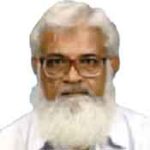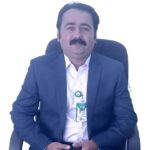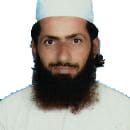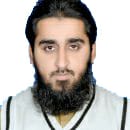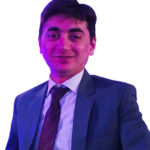Two years ago Logical,One years ago digital,Forever it’s Mechanical
Welcome-
Few Words About Us
Introduction
Mechanical Engineering involves the application of mechanical devices and a wide range of engineering activities from industrial equipment to manufacturing plants. The purpose of this discipline is to instill the abilities of understanding as well as the fabrication of different physical models and to develop research skills to enable the students to deal confidently.
Vision
Mission
Our vision is to produce graduates having capability to resolve real world engineering problems through their innovative, interdisciplinary, and problem-solving skills with social responsibility. We also envision them for continuous learning for sustainable growth of the society.
Our mission is to produce eminent professionals by providing quality education and industrial linkage to serve society by providing sustainable solutions with research-oriented skills and entrepreneurship through leadership with ethical responsibility.
Program Educational Objectives (PEOs)
Following are the Program Educational Objectives (PEOs) for B.Sc. Mechanical Engineering Program of the Department of Mechanical Engineering:
PEO-1
PEO-2
PEO-3
To produce graduates with in-depth knowledge and expertise in the field of mechanical engineering to solve technical and community issues
To produce graduates mindful of their social6, environmental7 and ethical8 obligations to address global concerns and enthusiasm for lifelong learning12 to match technological pace
To produce graduates with eloquent communication skills10 and capability of contributing as a team member9 as well as a team leader with excellent project management skills11.
Program Learning Outcomes (PLOs)
The Program Learning Outcomes (PLOs) are adopted in the Department of Mechanical Engineering as defined by Pakistan Engineering Council (PEC) to support our defined educational objectives. The PLOs are based on students learning such as aptitude, awareness and knowledge that gain with the succession of the program.
Ability to apply knowledge of mathematics, science, engineering fundamentals and an engineering specialization to the solution of complex engineering problems
Ability to identify, formulate, research literature, and analyze complex engineering problems reaching substantiated conclusions using first principles of mathematics, natural sciences, and engineering sciences.
Ability to design solutions for complex engineering problems and design systems, components or processes that meet specified needs with appropriate consideration for public health and safety, cultural, societal, and environmental considerations
Ability to investigate complex engineering problems in a methodical way including literature survey, design and conduct of experiments, analysis and interpretation of experimental data, and synthesis of information to derive valid conclusions
Ability to create, select and apply appropriate techniques, resources, and modern engineering and IT tools, including prediction and modeling, to complex engineering activities, with an understanding of the limitations.
Ability to apply reasoning informed by contextual knowledge to assess societal, health, safety, legal and cultural issues, and the consequent responsibilities relevant to professional engineering practice and solution to complex engineering problems.
Ability to understand the impact of professional engineering solutions in societal and environmental contexts and demonstrate knowledge of and need for sustainable development.
Ability to apply ethical principles and commit to professional ethics and responsibilities and norms of engineering practice.
Ability to work effectively, as an individual or in a team, on multifaceted and /or multidisciplinary settings.
Ability to communicate effectively, orally as well as in writing, on complex engineering activities with the engineering community and with society at large, such as being able to comprehend and write effective reports and design documentation, make effective presentations, and give and receive clear instructions.
Ability to demonstrate management skills and apply engineering principles to one’s own work, as a member and/or leader in a team, to manage projects in a multidisciplinary environment.
Ability to recognize importance of and pursue lifelong learning in the broader context of innovation and technological developments.
Lab and Research Facilities
In the Department of Mechanical Engineering various research labs and facilities are established to flourish the research activities.
-
- Engineering Mechanics Lab
This laboratory is primarily used to provide and conduct engineering laboratory experiments on principles of statics and dynamics. This Lab consists of Friction on an inclined plane, Simply Supported Beam, Hanging Rope Setup, Principle of moments model, Force in a tie jib crane, Forces on suspension bridge, Center of gravity apparatus, Roof Truss Apparatus, Equilibrium of Moments, Force Table, Rolling disks on inclined plane, Fly wheel apparatus, Hooke’s Law Apparatus, Toggle joint apparatus, Rubber Shearing Apparatus, Simple Pendulum. Number of Students per workstation is 3 to 4.
- Thermodynamics lab
2-Thermodynamics laboratory with latest equipment’s for the experimentation provides the fundamental and industrial knowledge about the thermodynamics laws, supports the educational needs of the thermodynamic course. In this lab course, students gets exposure of different thermodynamic systems and hands-on laboratory measurements of physical data.
(Temperature Measurement Bench, Mercet boiler lab unit, Dead weight pressure gauge, IC Engine study cut models, 2 stroke petrol engine(2), 4 stroke petrol Engine(2), Single stage Air compressor test rig, The state change apparatus, IC Engine Test Bed, 4 stroke diesel engine). Number of Students per workstation is 3 to 4.
- Engineering Drawing lab
This lab concerns with different types of lines & use of different types of pencils in an Engineering Drawing represents letters & numbers in drawing sheet, different types of projection, development of surfaces and isometric projections of objects. There are 30 drawing boards are present in drawing lab.
- Fluid Mechanics lab
This lab is run in conjunction with the theory course ME 211 (Fluid Mechanics). It is an introductory course where flow behavior, fluid forces and analysis tools are introduced. The goals of the experiments include determination of different fluid flow properties and basic understanding of working of pumps, turbines etc.
It includes Hydraulic Bench(2), Impact of Jet Apparatus(1), Orifice Discharge Apparatus (1), Orifice and Jet Apparatus (1), Bernoulli’s Theorem Apparatus (1), Energy losses in Bends and Fittings Apparatus(1), Hydrostatic Pressure Apparatus(2), Meta-centric Pressure Apparatus(2), Pitot Tube Apparatus, Pressure Measurement Bench, Drag Coefficient Apparatus, Flow Measurement Apparatus, Pipe Friction Apparatus, Osborne Reynold Apparatus, Fluid Friction Apparatus, Centrifugal Pump Test Bench, Series and Parallel pump Test Bench, Dead Weight Tester, Co-efficient of Discharge for Notch Apparatus, Flow over weir, Hydraulic Channel Fume. Number of Students per workstation is 3 to 4.
- Mechanics of Materials Lab
This laboratory is designed to provide students hands-on experience on Mechanics of Material. This lab has adequate equipment’s to complete the course successfully. Mechanics of materials lab provides wide understanding to analyze the response of stresses and strains in structural members, such as beams, columns, and shafts.
Workstations 11 (one Each), Deflection of beam apparatus, Curved bar apparatus, Torsion of shaft apparatus, Creep testing Machine, Pendulum Impact Tester, Universal Testing Machine, Fatigue Testing Machine, Column Buckling, Thin wall Cylinder, Thick wall cylinder.
- Manufacturing Processes Lab
The Manufacturing Processes (MP) Laboratory provides students with the opportunity to study and practice manufacturing processes. This laboratory provides students with experiential learning of the nature and technique of manufacturing processes. The MP Laboratory includes facilities to demonstrate and explore examples of casting, molding, forming, machining, heat-treating, and joining processes.
Sand casting plant with accessories (1), Welding Plants (Electric Arc Welding, Metal inert gas welding, Spot welding plant, Safety tools (3), Sheet metal forming Plant (1),
Lathe machines (4), Drill machines (1), Shaper Machine (1), Milling Machine (1), Forging Plant with necessary accessories(1), Different Accessories: bench vices(10) ,blade lock lever(1), whole saw(1), G – clamp(1), drill bit set(1), hand vice (small and large)(2), Safety glasses(16), mask glasses (arc)(17), Rip Saw (3), Vernier caliper (9), micrometer (1), hacksaw blades (16), Different tools for metal and wood working(105).
- CAD-Lab
Understand the basic fundamentals of computer aided design and manufacturing. To learn 2D & 3D transformations of the basic entities like line, circle, ellipse etc. To understand the different geometric modeling techniques like solid modeling, surface modeling, feature based modeling etc. and to visualize how the components look like before its manufacturing or fabrication. This lab has total 40 PC.
- Mechanics of Machines Lab
This lab is meant for understanding the basic concepts of mechanics of machines using Fly wheel Apparatus, Friction of belts, Rack and pinion, Cam and follower, Automotive gear system, Bevel helical gear, Screw jack, Wheel and axel, Worm and wheel, Four bar chain, Whitworth quick return mechanism, Crank and connecting rod, Geneva mechanism, Gear Train Apparatus, Slotted link, Wheel and differential axel, Spur Gear Lifting Apparatus, Epi-cyclic Gear Apparatus.
- Heat and Mass Transfer Lab
The objectives of Heat & Mass Transfer laboratory is to demonstrate the concepts discussed in the Heat & Mass Transfer course and to experimentally determine thermal conductivity and heat transfer coefficient through various materials. The demonstration is carried out using Linear and radial Heat transfer Study Unit, Extended Surface Heat Transfer Study Unit, Thermal Conductivity of Liquid and Gases Study Unit, Thermal Conductivity of Insulating Powder Unit, Unsteady State Heat Transfer Study Unit, Free and Forced Heat Convection Study Unit, Multi Heat Exchanger Study Unit and Thermal radiant study unit. In this lab, experiments are performed to measure the effectiveness of heat exchangers.
- Refrigeration and Air conditioning Lab
The intent of this laboratory is to provide an insight of underlying concepts of R&AC. This lab is equipped with Work stations (1 each), Refrigeration Cycle Demonstration Unit, Film and Drop wise Condensation, Water Cooling Tower, Heater Ventilation Air Conditioning and Fault Simulator
- Mechanical vibration Lab
The purpose of this lab is to understand the concepts of vibration system theory. This lab includes Vibration Test Rig, Whirling of shaft Apparatus, Spring mass system, spring in series and parallel, Rotor Shaft system, simple pendulum and compound pendulum.
- IC engines lab
This lab has IC Engine study cut models, 2 stroke petrol engine(2), 4 stroke petrol Engine(2), Single stage Air compressor test rig, The state change apparatus, IC Engine Test Bed, 4 stroke diesel engine) and these apparatuses comprehensively elaborates the different parts of the engine and their working principles.
- Work Shop
This lab offers students an opportunity to understand the concepts of workshop tools such as foundry and welding using welding plants (electric arc welding, metal inert gas welding and spot welding). In this lab, students are taught to operate different lathe, drill, shaper and milling machine. This lab also has forging plant.
- Precision Engineering and Metrology Lab
This laboratory provides an opportunity to familiarize with the different apparatuses which are frequently used for the characterization of measurement and testing i.e. Vernier Height Gauge 300 mm (4), Vernier Depth Gauge 150 mm (4), Digital Height Gauge 300 mm (2), Screw Gauge Micro 0-25mm (7), Micrometer Depth Gauge 0-25 mm (4), Radius Gauge 1-7 mm (7), Feeler Gauge 0.5-1.0 mm (10), Screw Pitch Gauge(7), Small Hole Gauge 3-13mm (4), Telescope Gauge 8-150 mm (4), Vernier Bevel Protector (4), Sine Bar (2), Gear Tooth Vernier Caliper (2), Slip Gauges (2)
- Applied Sciences Lab
This lab explains the concepts of two subjects applied physics and applied chemistry and has Thermometers (30),Test Tube stands (6), test tube holder (20), test tube stand plastic (12), test tubes (240), Beakers (36), Conical Flasks (26), Measuring Flasks (44), Sprit Lamp(12), Pipit (24), Digital Balance(6), Kips Apparatus (6), Stalgo meter (12), Visco meter (12), Burrit (8), Reagent Bottle (52), pester and martyr (6), Ton iron (12), Glass rod (20), Mirror strip and holder (20), and Searls apparatus (6).
- Instrumentation & Control
This lab has Workstation(8), {Function Generator, Oscilloscope, DCPower Supply PCs, DMM}, PLC Panels with PC(6),Control System Trainer (4) (6), Transducer Instrumentation Trainer (9), Oscilloscope, Power Supply, Function Generator, DMM (9), CT (9), PT (1), Breadboard (08), DMM (10), Analog multimeter (5), Galvanometer (16), Shunt resistance (3),Digital temperature Indicator(1), AC voltage Detector(1),
SMD(1), Inductance Capacitance meter(1), Component Box(2).
Achievements
We believe the close faculty-student interaction enabled by our small but diverse population fosters intellectual growth among our students. We are proud of our students’ many accomplishments, and make sure to celebrate them at PIET.
Journal and Conference-Publication by Students
PUBLISHED PAPERS
- Zafar Abbas, Muhammad Tahir Hassan, Mughees shahid, Muhammad hamza Tahir, “Vibration isolation of single-cylinder engine testbed: a comparative analysis of isolation materials” IJRET volume 05 issue 08 august
- Zafar Abbas, A. N shah, M. Tahir Hassan, M. Sarfraz Ali, Qamar-ud-din, Bilal Naseem, Ammar Asghar, Ali Haider “Performance evaluation of novel solar-powered domestic air cooler with Peltier modules.” Journal of mechanical sciences and technology volume 11 issue 34 Nov 2020
- Zafar Abbas, Asif Siddique, Syyed Adnan Raheel shah, Akbar Ali, Muhammad Sarfraz Ali, Anum Zahra, Usama Ali, Hassan Ali, Danial Saleem, “performance evaluation of energy-efficient emission-free electric-bike” energy sources”, part a: recovery, utilisation, and environmental effects (under review)
- Lu Yiping, Azeem Mustafa, Mirza Abdullah Rehan, Samia Razzaq, Shoukat Ali, Mughees Shahid, Ahmad Waleed Adnan, “The Effects of Water Friction Loss Calculation Methods on Thermal Field of the Canned Motor”, Processes 2019, 7, 256
- Salman Ahmad, Samia Razzaq, Mirza Abdullah Rehan, Muhammad Ali Hashmi, Shoukat Ali, Zafar Abbas, M. Shurjeel Amjad, Umair Mehmood, “Experimental Investigation of Novel Fixed Dome type Digester using Gas Recovery Chamber in rural Areas in Pakistan”, International Journal of Renewable Energy Research, Vol.9, No.3, 2019
- Muhammad Kashif Shahzad, Mirza Abdullah Rehan, Muzaffar Ali, Azeem Mustafa, Zafar Abbas, Muhammad Mujtaba, Muhammad Imran Akram, Muhammad Rabeet Yousaf, “Cooling Performance Assessment of a Slinky Closed Loop Lake Water Pump System under the Climate Conditions of Pakistan” Processes 2019, 7, 553
- Mirza Abdullah Rehan, Azeem Mustafa, Mughees Shahid, Samia Razzaq, Zeeshan Abbas, Muhammad Hamza, Zeeshan Rasool, Muhammad Waqas, “Feasibility Analysis and Cost Optimization of a grid-connected hybrid energy system in Pakistan, An application of HOMER”, International Journal of Energy and Environment, Processes under Review, 2017.
- Naeem Gul of 2kx6 bath has won the seat of vice president of PIET’s student’s executive body in PIE
- Zain Ali Bhutta of 2KX7 Batch has won the interdepartmental Quiz Competition in PIET.
- Four Students of 2kx5, Bilal Naseem, Ali Haider, Ahmad Waleed Adnan and Ammar Asghar has secured third position in NUST Olympiad Robot Competition on 7th March 2019.
- 2kx8 students fabricated A portable CNC machine, smart fire extinguisher, Smart sanitizer. And Instrumentation related class projects
As under.
- The absolute distance measurement using displacement sensor
- Autometic Temperature and humidity measurement system
- Light on/off switching system using human interface sensor
- Flow measurement system using position sensors.
- The Final year projects designed by students of mechanical engineering at PIET Multan participated in DICE competition held at NED University Karachi got 5th and 9th position among all universities.
- The students of 2KX5 Mechanical Engineering Bilal Naseem, Ali Haider, and Ammar Asghar participated in Robotics competition held at NUST and got 2nd position among all participants.
- Ten students of 2KX6 Mechanical Engineering are serving in industries in the night shift parallel to their studies since 2018.
- The students of Mechanical Engineering PIET Multan participate yearly in interdepartmental Rocket competition held in Multan.
- The students of Mechanical Engineering PIET Multan often visit the local small industries and provide a suitable solution to their technical problems under the supervision of an industrial liaison officer.
Experienced Staff
Teaching is conceptual and intellectual, abstract and concrete, creative, and sequential. It’s about people but framed through ideas.
